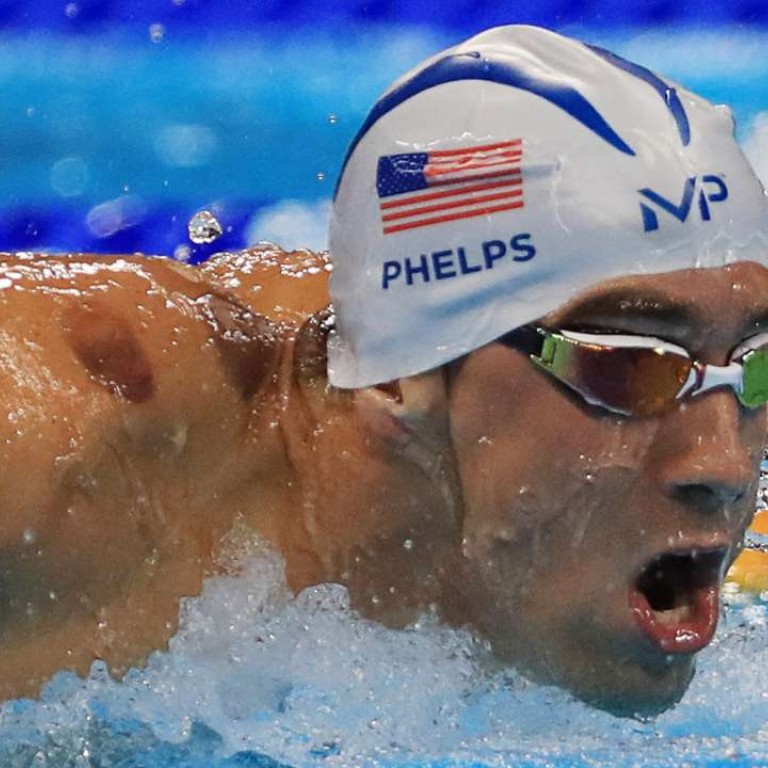
Five things you should know about cupping, Chinese medicine therapy on view in Rio
American swimmer Michael Phelps and gymnast Alexander Naddour have been spotted with the tell-tale red marks at the Olympics – but what is cupping? Is it safe? Does it work?
Interest in cupping therapy may have spiked after American swimming star Michael Phelps bared his purple-blotched shoulders en route to winning the first of his latest batch of Olympic gold medals in Rio. But in Hong Kong, this traditional Chinese medicine treatment, with its 2,000-year history, has always been in vogue.
“Cupping therapy has always been very popular in Hong Kong,” says associate professor Dr Lin Zhi-xiu, a registered Chinese medicine practitioner and acting director of the School of Chinese Medicine at the Chinese University of Hong Kong (CUHK).

“Most acupuncturists who practise Chinese medicine in the territory will use cupping therapy every day in their practice, with or without the combination of acupuncture, to treat various medical conditions. Cupping therapy is said to have the therapeutic effects of warming the meridians and invigorating the small vessels, enhancing qi movement and removing blood stasis, dissolving swell and stopping pain, expelling wind and cold pathogens.”
Was Michael Phelps’ latest gold medal a victory for Traditional Chinese Medicine?
The earliest recorded use of cupping is from the famous Taoist alchemist and herbalist Ge Hong (283–343 AD). The method was described in his book A Handbook of Prescriptions for Emergencies, in which the cups were actually animal horns, used for draining pustules.
Lin says many conditions can be treated with cupping therapy: rheumatic pain, neck and shoulder pain, sports injuries to the muscles and joints, numbness of the limbs, and other acute or chronic pains such as abdominal pain, back pain, menstrual pain and headache, among others.

Phelps, the most decorated Olympian in history, has reportedly been using cupping as a recovery method to ease soreness from training and racing for about two years. And it seems many of his Team USA mates have also been using the therapy. In a USA Today interview, gymnast Alexander Naddour called cupping his “secret” to keeping healthy – he had bought a do-it-yourself cupping kit from Amazon, which costs about US$30.
Think you might give the therapy a go? Here are five things you should know.
1. Think of it as getting a few love bites.
In place of a mouth, specially made cups – usually of glass, but bamboo is also used– are used. Lin explains the process: after a body surface is selected based on traditional Chinese medicine diagnosis, the practitioner holds a cup in his hand, then places a flame (by igniting an alcohol-soaked cotton wool ball) in the cup for about one second.

When the flame is withdrawn, the cup is immediately put rim side down on the body. Heating the air in the cup produces low pressure inside, enabling the cup to suck on the skin with an effect to increase blood flow to achieve a therapeutic outcome. The skin is pulled upward and reddened as a result.
In general, the cup is left in place for between five and 15 minutes. It is removed by pressing the skin alongside it to allow air to leak in and release the pressure. Sometimes, oil is applied to the skin before the cups are placed, to allow the practitioner to glide the cups along meridians of the body.
2. It will leave its mark – temporarily.
Just like getting a love bite, cupping therapy leaves its circular marks for about a week. But these are not bruises, according to Australia-based traditional Chinese medicine practitioner Bruce Bentley, who spent 30 years in a dozen countries studying the range of cupping techniques.

“Thinking of cupping marks as bruises may also conjure up the notion that they must be the result of a painful procedure,” writes Bentley in The Lantern, an international journal of TCM. “On the contrary, cupping performed correctly, with the appropriate choice of method and the correct level of suction to suit the patient’s strength and condition, is always a comfortable and satisfying experience.”
3. The science behind it is sketchy.
Dr Vincent Chung Chi-ho, convener (education) of CUHK’s Hong Kong Institute of Integrative Medicine, says there is clinical evidence on cupping for herpes zoster, acne, Bell’s palsy, low back pain and cervical spondylosis.
Expired: Hong Kong government’s ideas about Chinese medicine are clearly past their sell-by date

4. It works for some, but not others.
Nicholas Yong, who has cervical spondylosis, a condition that results in persistent neck and shoulder pains, tried cupping therapy and says there was no real effect. But for Jean-Francois Torrelle, a recreational cyclist, it was “the only thing that worked” in terms of preparing his body for cycling events. Yasser Mohamed also found cupping to provide great relief from general fatigue and muscle aches. “I definitely felt a lot lighter and less tense the next morning,” he says.
5. It’s generally safe to try.
“Cupping is usually very safe, especially under the care of qualified TCM practitioners,” says Lin. Two health dangers, he says, are skin burns due to dripping alcohol, and skin blisters due to excessively tight cupping and the cup being left on the body for too long.

And, Lin says, definitely don’t try it at home with a DIY kit.

